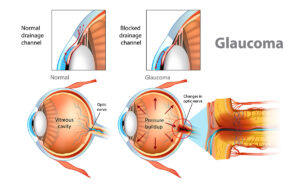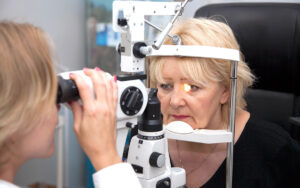The Pros and Cons of Refractive Lens Exchange
[/vc_column_text][/vc_column][/vc_row][vc_row][vc_column][vc_column_text]1. Stop Wearing Eye Contacts a Week Before The SurgeryLike other types of eye surgery, refractive lens exchange (RLE) has its benefits and drawbacks. Before you make up your mind on whether or not to undergo the procedure, it is good to understand what the procedure involves and determine whether it is the right procedure for you.
Refractive Lens surgery is also referred to as lens replacement surgery, clear lens extraction, or refractive lensectomy. It is an eye procedure that involves replacing your natural refractive lens with an artificial lens to correct improper light refraction in your eye(s) that can result from various eye conditions.
Your eye doctor will recommend any of the three types of intraocular lenses (IOLs) available that are best fit for replacing your natural lens, depending on your eyesight condition. These choices include:
- Monofocal IOL: As the name suggests, this type of lens provides a clear vision for only one fixed distance. It can be long, short, or medium distances.
- Accommodative IOL: This is a monofocal lens type but with the ability to adjust with your eye muscles to provide a clear focus for multiple distances by changing positions in the eye.
- Multifocal IOL: this is a sophisticated lens type that is ideal for providing a clear vision for long, short and medium distances.
Here are the pros and cons that you will need to understand to make informed choices on whether to undertake a refractive lens exchange or choose another eye corrective operation.
Pros of Refractive Lens Exchange
Refractive lens exchange helps in promoting your overall eye health by correcting the poor refraction in your eye. RLE is an ideal surgical procedure for correcting presbyopia. Apart from these, there are numerous other benefits associated with RLE discussed below.
1. Refractive lens exchange provides better visual quality and a more permanent solution.
More people still consider laser vision correction (LVC) as a way to correct their eye condition to avoid depending on other corrective lenses. However, LVC may not provide long-lasting solution and the best vision quality the way refractive lens exchange would do. This is because an intraocular lens used to replace the natural eye lens in RLE does not change with time, and it is designed to offer the best vision quality.
2. Avoids the burden associated with spectacles and other corrective lenses
Once RLE is performed, you won’t be relying on other corrective lenses that are usually accompanied by problems such as headaches, eye-straining, and delicate handling on some types of lenses. Hence, RLE provides you with more comfort without the worries associated with other types of corrective lenses.
3. It is the ultimate solution in situations where other procedures are inappropriate
There are various conditions, such as severe refractive error or malfunctioned cornea, that make RLE the most viable surgery. Such conditions may make it impossible for other vision corrective surgery to correct your condition. Your doctor might recommend RLE as the only solution remaining to restore a clear vision rather than retaining your poor sight with an inability to perform other eye operations.
The benefits that result from RLE may differ among individuals depending on the underlying eye condition(s). You may benefit from the above benefits and more other benefits depending on your eye condition. Nevertheless, it is worth noting that RLE may be the only solution for your eye condition, or it can be an option that can help you improve your eye health, amongst other benefits.
4. RLE does not require extensive recovery time
The greatest benefit of RLE is short recovery period and the fact that it takes less than 30 minutes to complete the operation procedure. Many patients report that they were able to resume their normal daily routine a day after the procedure. Many people also report that they receive and improved vision immediately.
5. Eliminates the potential for developing cataracts in the future
Unlike your natural lenses that continually age and change throughout life, an artificial lens does not. RLE results in optimal vision that will not deteriorate progressively. Since the artificial lens does not change, you will not get cataracts. Also, you will not have to tolerate decline of your vision nor require cataract surgery.
Cons of Refractive Lens Exchange
Despite being advantageous in multiple ways, RLE has its drawbacks. However, this shouldn’t be your major worry because there isn’t a single eye procedure that does not have its disadvantages. Besides, the associated complications can be corrected. Further, the benefits involved with the procedure outweigh the cons if RLE is the ideal procedure for you. Let’s proceed to have a look at RLE’s cons.
- It is inappropriate for some conditions
Despite RLE being one of the best eye procedures to provide better vision quality, it may not be ideal for some eye conditions. - It is a more invasive procedure
RLE involves a surgery that is more invasive than other vision correction procedures like LASIK and PRK.. RLE involves more risk during the removal of your natural lens. However, risk occurrence is rare, and if it happens, the complications involved can often be corrected through medications or further surgery. - It may require post-treatment after the procedure
Usually, it will only take you a few days to recover and obtain a clear vision after undertaking RLE surgery without post-treatment required. However, some instances can necessitate post-treatment for you to gain a clear vision fully. - RLE is a costly procedure
If you are looking for cheaper eye surgery, RLE may not be a favorable option for you. It is a more expensive surgery than LASIK and other available eye treatment options. You will incur approximately double the cost of LASIK to have RLE done. However, the cost incurred would be worth the resulting benefits if RLE surgery is the only option that is left to correct your eye condition.
If you are experiencing eye problems, the appropriate intervention might be refractive lens exchange. However, it would be best always to visit an ophthalmologist to get to know the real diagnosis and root causes of your eye condition. After that, your ophthalmologist can recommend the best prescription for your eye(s). If you’re recommended for refractive lens exchange or any other appropriate eye treatment, it will help to know the pros and cons associated. This is essential to help you to understand your actual eye diagnosis, appropriate treatment/surgery, and the accompanying pros and cons to understand the proper care essential for enhancing your eye health.[/vc_column_text][/vc_column][/vc_row][vc_row][vc_column][vc_empty_space][/vc_column][/vc_row]




